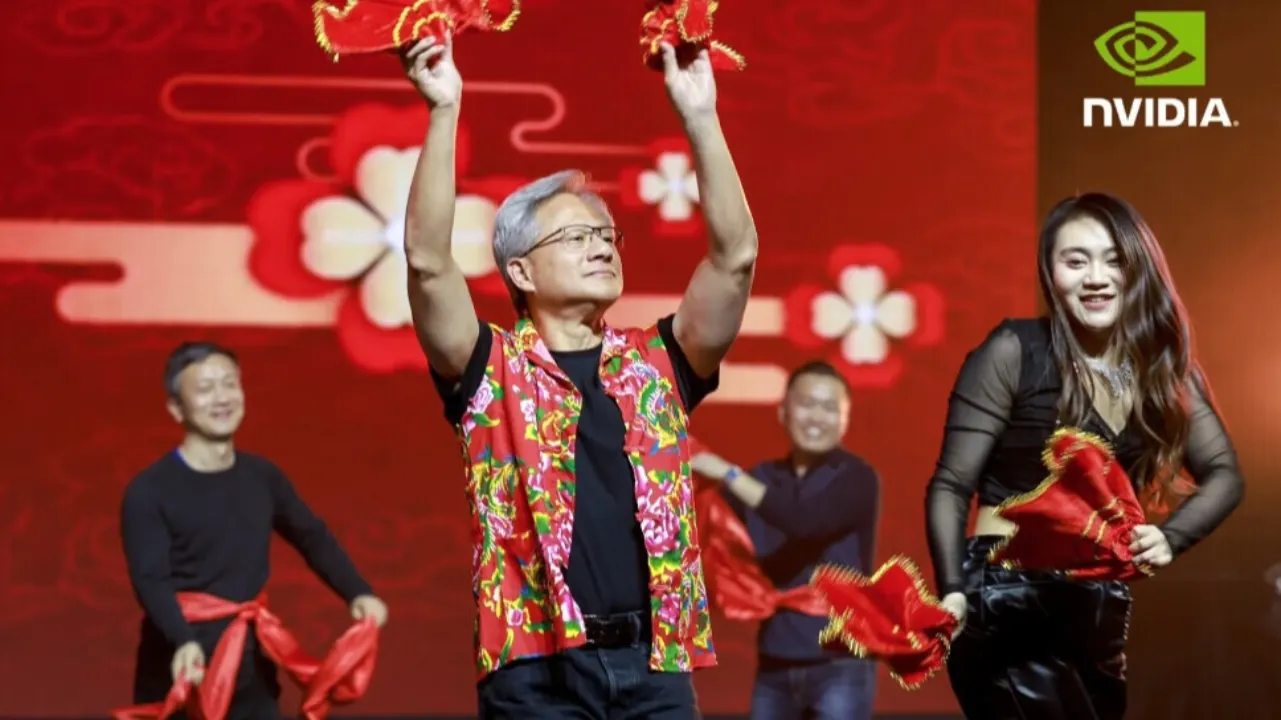Jensen Huang, Nvidia's CEO, made no announcement of his recent visit to the Chinese mainland—his first trip there in several years—but it nonetheless caught the notice of tech industry watchers.
Huang's visit, played down as a mere New Year celebration, saw him dancing in a Harbin-style cotton coat at Nvidia's annual celebration in Beijing, presenting to the world a jovial reunion with his China-based team. However, beneath Huang’s plan of having a good time may lie a deeper strategic significance as Nvidia grapples with the complexities of the US-China tech landscape.
Little is known about the trip other than it included stops at Nvidia's offices in Beijing, Shanghai, and Shenzhen, according to a report by The Global Times. Shortly after that, local reports say he moved on to visit Taiwan where he is more active: this is his fourth visit in one year. He was also seen interacting with the public in the Ningxia Night Market. Local press speculates that he may be participating in meetings with manufacturers and relevant partners.
"Huang's trip may have been in response to US government restrictions on Nvidia's exports of chips to China,” Zhang Xiaorong, director of the Cutting-Edge Technology Research Institute, told The Global Times. “Nvidia may need to seek cooperation with local Chinese players to ensure that its products have access to the Chinese market,"
Despite stringent restrictions imposed by the US government, Nvidia has managed to maintain a strong stock price. Nvidia has been navigating some turbulent waters stirred by a pretty bullish AI hype versus a pretty bearish “chip war” in which the United States is trying to restrict any technological advance that comes from China.
The Chinese market, a significant player in Nvidia's global strategy, has been responding to these challenges. Major tech giants like Tencent and Baidu had preemptively acquired mass amounts of Nvidia GPUs before the sanctions hit. However, reports suggest that the US government's measures haven't been as effective as anticipated. China, showcasing its adaptability, has found ways to meet part of its technology demands despite the sanctions.
Another key aspect of Nvidia's ongoing struggle is China’s push for local alternatives to its products, and the lack of interest in downgraded chips —Nvidia’s solution to supply new cards and comply with US sanctions.
As the US tightens its grip on technology exports, Chinese firms are racing to replace foreign-made semiconductor equipment with domestic alternatives. The General Administrative of Customs of China noted a 14.6% year-on-year decrease in chip imports in 2023. This trend is further evidenced by the anticipated start of operations at 18 Chinese chip manufacturing projects in 2024, aiming to boost production capacity.
While facing these challenges, Nvidia plans to begin mass production of an AI chip designed specifically for China this year, adhering to the latest US export rules. Nvidia doesn’t want to leave China—and for Jensen Huang, the country is clearly more than just a place to have a good time during the holidays.
Edited by Ryan Ozawa.
Daily Debrief Newsletter
Start every day with the top news stories right now, plus original features, a podcast, videos and more.

